
The Art of Non-Alcoholic Spirits
blog
For decades, spirits and cocktails have fostered a culture of craft, connection, and celebration. But over time, cocktail culture has evolved far beyond the buzz!
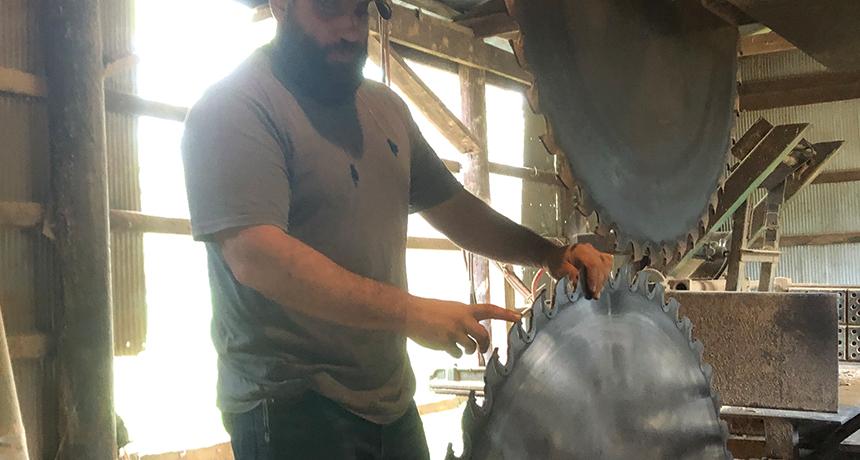
Written by Shelley Sackier, Director of Distillery Education, Reservoir Distillery
"You can see the piece within the piece."
I know that might sound a tad cryptic, but this was a phrase uttered nearly simultaneously by both Vic Ramoneda and his employee, Bill DiSantis, as we all bent over a freshly cut plank of wood in the Ramoneda Brothers Stave Mill in Culpeper, Virginia.
"Do you mean like Michelangelo and the whole, ‘The sculpture is already complete-it's there in that block of marble' kind of thing?" I asked them both.
I laughed. They nodded politely at the joke. And then agreed, "Exactly."
As Director of Distillery Education for Reservoir Distillery, I was neck-deep in wood science research, and this was my first on-site introduction to one of the most instrumental parts of our spirit making process-barrels. Without their participation and interaction, we have nothing but distillate to bottle; and although I think the gin-clear liquid that trickles from our copper pot's parrot spout is remarkable in its flavors and aromas, it is not our final goal.
Because the casks themselves are as intricate in contemplation and design as the whiskey itself, I thought it might be worthwhile to bring our customers a glimpse of what makes us uniquely Reservoir-and that happens to be other people.
That is, other people who we consider a part of our extended family-the skilled craftsmen who contribute vital ingredients. Vic Ramoneda is exactly who I'm talking about.
Born a 4th generation Ramoneda involved in the stave mill and cooperage world, Vic has a depth and breadth of knowledge only known to those who've found it sewn into their souls via the transfer of DNA. The Ramonedas ancestral roots are buried in Catalonia, Spain, where their relatives first began (and continue) to labor within the industry. At 92, Vic's father Vincent has not retired and still holds an office at the stave mill to this day where he contributes his own wealth of knowledge, when needed.
As I scanned the stave mill yard, I saw the massive oaks piled, their lengths long and bark intact, waiting their turn to be loaded upon the conveyor belt toward the massive circular blades that would slice them into manageable bolts-a term I liken to a slightly larger bolt of cloth, only significantly heavier and much less colorful.
The scent in the air was pungent-spicy, fragrant, and heady. "Fresh wood has an acidity to it," said Bill. "You can actually tell when the pH of the wood has changed with its seasoning based on that acidic note that can, at first, blow you away."
Vic and Bill walked me through the start-to-finish process, engaging the conveyor belt that held the bolts. Those logs were on their way to a second visit toward the swirling blade which surely made a cameo in some long-ago Bond film. I'd been given earplugs, but the sound of sharply steeled teeth slicing through wood still sung through the air.
The two men worked with practiced choreography, rolling, clamping, and flipping the logs, the newly quartered pieces now riding another conveyor belt toward other blades and their maneuvers. A second blade slices the quarters into planks, where Bill lays one flat for me to peer at with the same intensity he employs. "You have the bark, the sap, and the heart. We know within a split-second glance where to make the cut," he states before pushing the piece through a two-sawed edger.
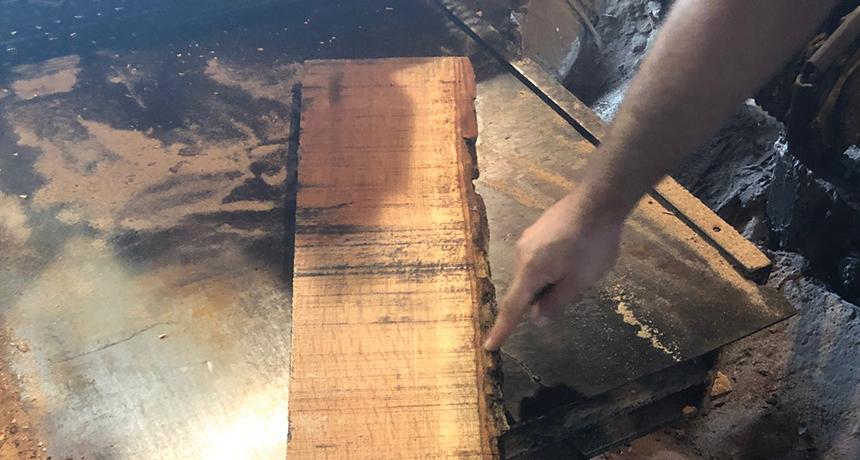
I suppose one would know that after hundreds of thousands of inspections before slicings. "You have to handle 100,000 pieces to be a good Edger and have to handle 1,000,000 pieces to be a good Grader," Vic nods toward Bill.
I also imagine one of these fellas is close to that quota and the other has far surpassed it.
The pieces of wood, each growing smaller with every blade's station, are sorted into grades-the piles for wine and bourbon barrels, the stack for chipping or flavoring components, back onto another conveyor belt for mulch, and that which ultimately becomes sawdust. Nothing is wasted.
"The Grader must identify where each piece of wood is most profitable. He's looking for the best yield for sales," Vic says as he specifically points out that which goes for wine staves, and that which is saved for whiskey.
As much as I'm interested in seeing the staves heading off to coopers making barrels for wine, I'm much more drawn to seeing the slim wooden arms that will be cradling our spirits. In their fresh, raw form, they exude a form of youthful eagerness, but I know it won't last. The freshly milled wood, once in finished stave form, is then precisely stacked-a mix of artistry and science employed with its construction.
Air must flow between the pieces, microbial fungi are invited to feast on the wood, bacterial degradation begins, the sun shines upon it, and rains trickle within it. This process is called seasoning, and just like flavoring one's masterful dish of gastronomy, the wooden staves experience a flavor-packed chemical change as they undergo the months-and even years-of patiently waiting in the outdoors for the forklift to move in their direction.
The organic compounds within the seasoning planks-the cellulose, hemicellulose, lignin, tannins, and lactones-all undergo slow and complex shifts. Tiny rootlets called hyphae shoot out from the fungi and penetrate the fibers of the wood. They begin their work chemically breaking down the structure, softening the tannins and even caramelizing the hemicellulose. Because the composition of hemicellulose is the least tightly bound, it is more chemically reactive to the fungi enzymes.
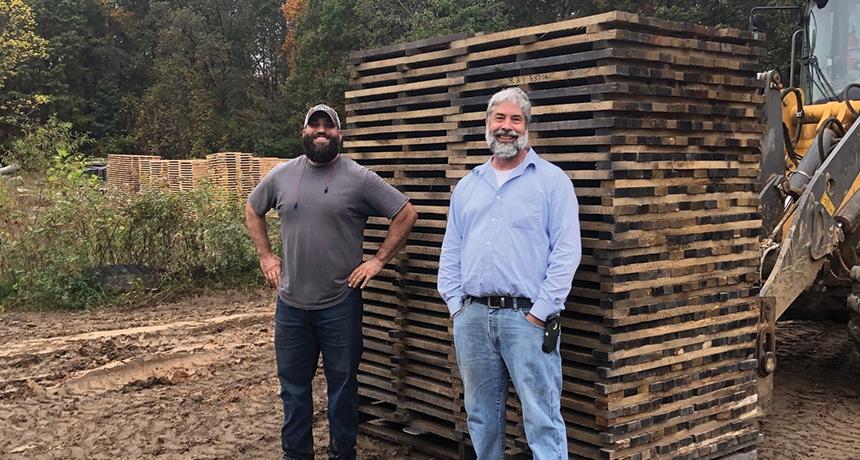
I traveled from the fresh pile of tartly scented staves to one large stack at the edge of the stave mill that would soon be on its way to the cooperage and then shortly made into our barrels. This stack is 4.5 years old-the oldest staves we'll have assembled into casks. Once complete, those casks will then embrace our new-make spirit as it languidly draws flavor-filled organic compounds from the staves and leaves behind less appealing components we'd prefer to see vanish. Despite the next round of the ever-present waiting game, everyone at Reservoir is growing excited with their reveries of what those ultra-aged staves will produce.
For some of us, simply sitting with the glass of gold in our hand, sniffing and sipping is heavenly enough. For others, a trip back in time is a gift from the gods. To meet the trees that birthed the staves, to see those staves formed into barrels, to watch those barrels fill with spirit, to wait beside them as they age…
The process is as magical and meaningful as the bliss of that first sip. Sharing those magical moments conjured up by such gifted people is what we're all about here at Reservoir, and as it should be with all makers of transcendent spirits.
Reservoir whiskey: brought to you by Mother Nature and those who know how to wield her wand.
Interested in advancing your knowledge of distilling and the spirits industry? Check out Moonshine University's upcoming courses to learn from the best in the business.
Written by Shelley Sackier, Director of Distillery Education, Reservoir Distillery; this article is also published to Reservoir's blog.

blog
For decades, spirits and cocktails have fostered a culture of craft, connection, and celebration. But over time, cocktail culture has evolved far beyond the buzz!
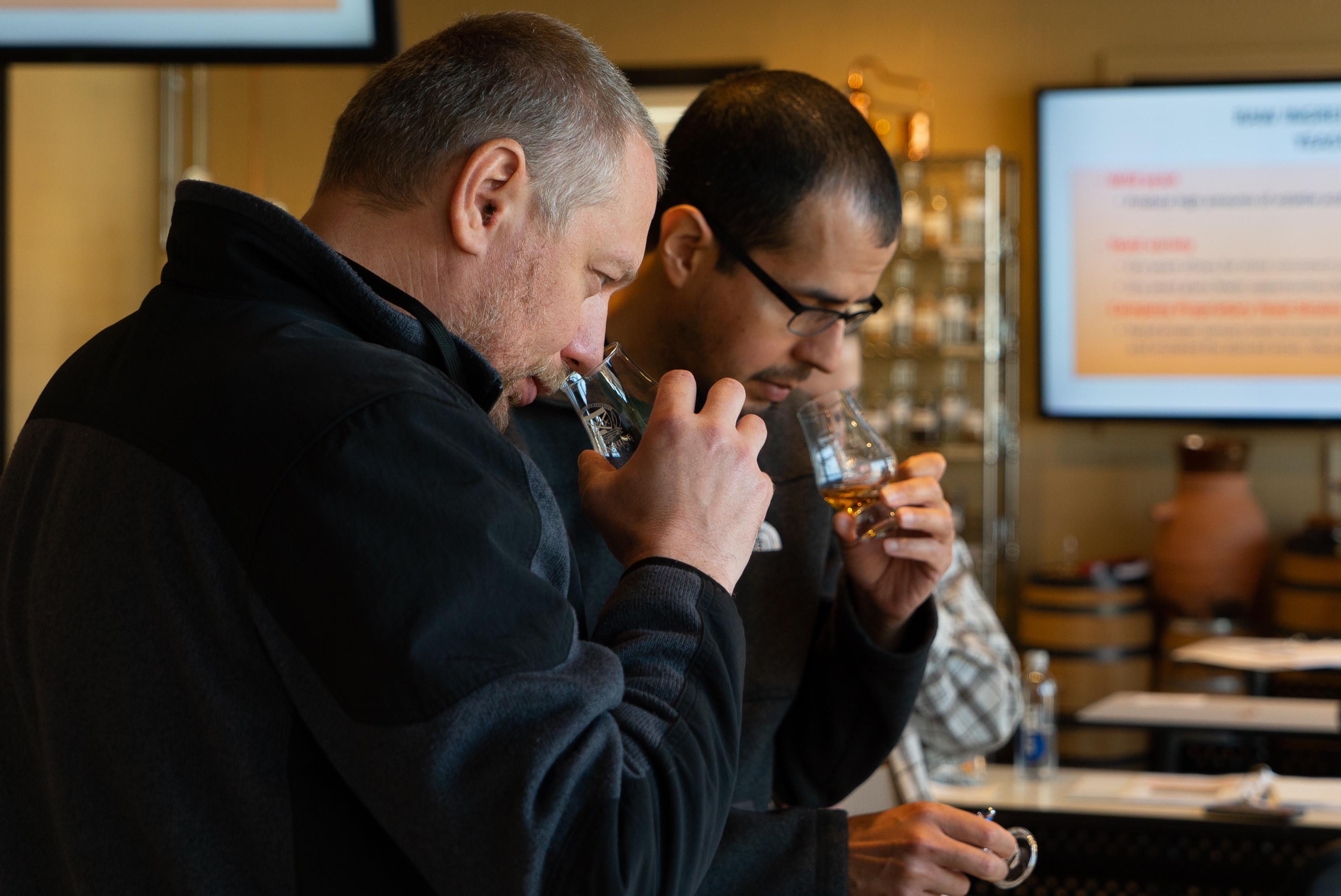
blog
Those that are familiar with the process of crafting distilled spirits may also be familiar with the 10 common congeners that are created during fermentation, and honed during the distillation run. Each congener has its own distinct personality, rendering unique tastes and aromas to the finished spirit.
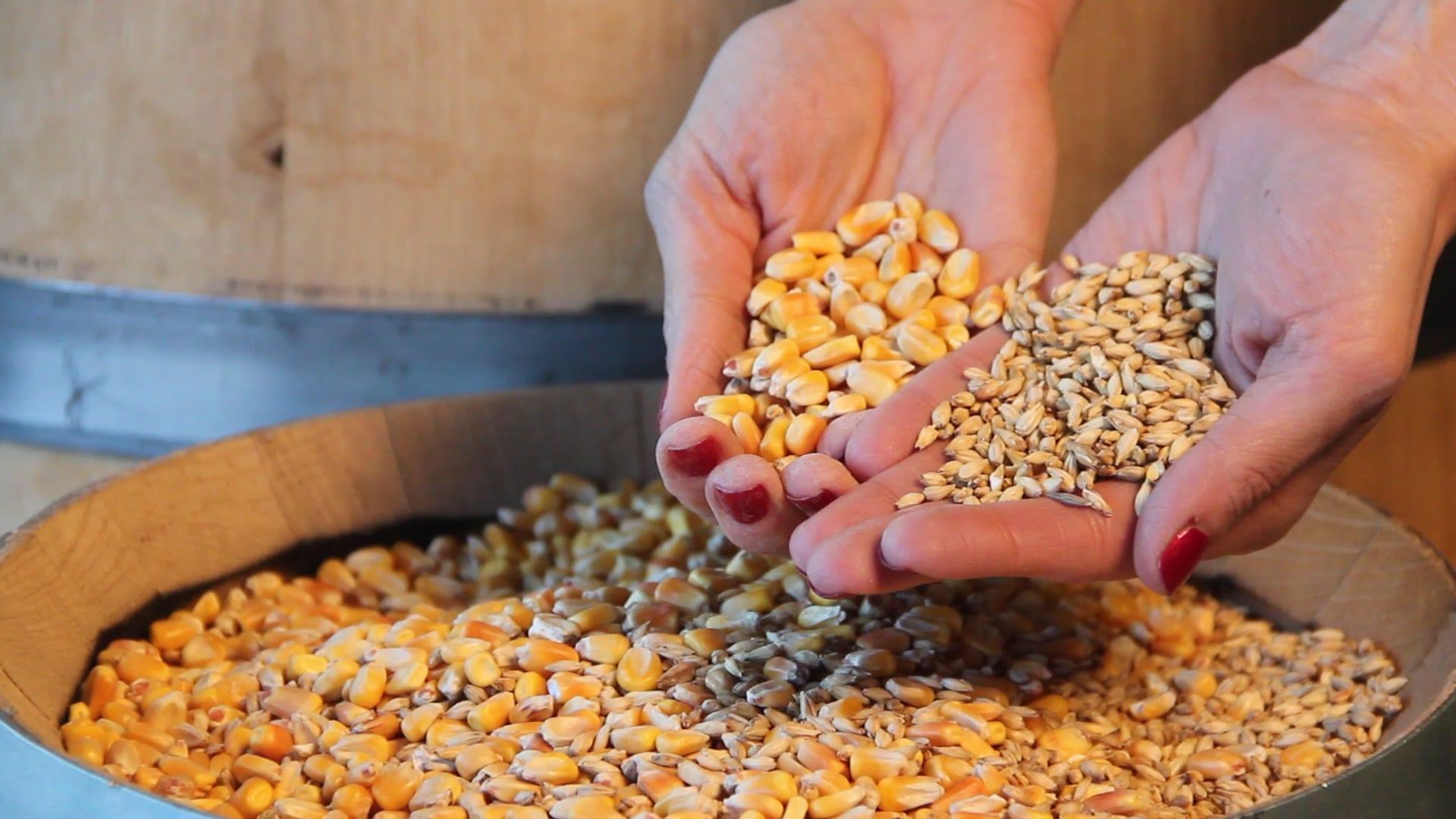
blog
So, you want to start distilling with freshly milled grain. Maybe you're tired of paying top dollar for the pre-milled stuff from the malt distributor, and you're ready to invest in the quality, efficiency, and bulk pricing that comes with milling your own whole grain. But where do you start?